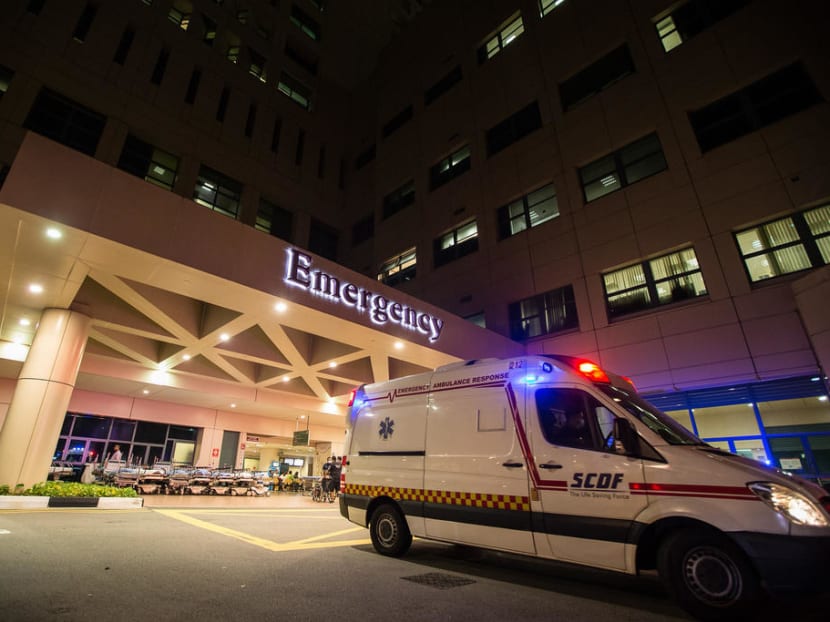TTSH reports surge in accidents involving PMD riders over last 3 years, especially in 2019
SINGAPORE — While much attention has centred on pedestrians suffering severe, even fatal, injuries after collisions with personal mobility devices (PMDs), PMD riders themselves are also being injured in fast-rising numbers, Tan Tock Seng Hospital (TTSH) said on Monday (Oct 21).

Tan Tock Seng Hospital has reported a surge in the number riders of personal mobility devices presenting with injuries, some of them very serious.
SINGAPORE — While much attention has centred on pedestrians suffering severe, even fatal injuries after collisions with personal mobility devices (PMDs), PMD riders themselves are also being injured in fast-rising numbers, Tan Tock Seng Hospital (TTSH) said on Monday (Oct 21).
A stocktake at TTSH found a 68 per cent surge in PMD-related accidents over the last two years and nine months, the hospital said at a briefing.
Between January 2017 and September 2019, the hospital treated 213 patients who were PMD riders, and saw six patients who were pedestrians involved in PMD accidents.
Among the 213 PMD rider incidents, there were six deaths. More than three-quarters of the PMD riders were male.
The trendline is rising: In the first three quarters of this year alone, 79 PMD riders were admitted to TTSH compared with 87 cases for the whole of 2018. The hospital saw 47 patients in 2017.
TODAY has made requests for statistics on PMD accidents from other hospitals and the Ministry of Health.
Key statistics from TTSH:
Among the 213 PMD rider patients seen at TTSH, about 53 per cent (114) were patients aged 20 to 39.
About 29 per cent of them were between the ages of 40 and 59, while 9 per cent were above 60 years old.
The most common afflictions were injuries to the head and neck, followed by external abrasions or lacerations. Chest injuries made up 9 per cent of cases while injuries to the extremities such as sprains, fractures or amputations were 8 per cent.
Doctors at TTSH also found that a majority of PMD riders who suffered moderate to severe injuries had “self-skidded” their PMDs although in the majority of cases, the cause of the accident was not recorded.
Doctors measured the severity of each patient’s injuries according to a metric called the Injury Severity Score, a measure of overall trauma to six body regions such as the face, neck and chest, among others.
Those who have moderate to severe injuries usually suffer from a combination of afflictions to various parts of their bodies.
Among 46 patients who had moderate to severe injuries, 28 were those who had self-skidded, while nine had collided with another vehicle such as a car or van. Five had crashed into fixed or stationary objects like walls, while three had hit other PMDs.
Among the same 46 patients, TTSH found that only seven had donned helmets.
About 167 patients suffered minor injuries and the hospital had no available information on the cause of injury in most of these cases.
Dr Sunder Balasubramaniam, associate consultant of trauma services at TTSH, said that recovery can be prolonged for moderate to severe injuries related to the head.
TTSH said that for severe injuries, the average length of hospitalisation is 21 days, while average hospitalisation leave could stretch up to 56 days.
For moderate injuries, the average length of hospital stay is seven days, while average hospitalisation leave is 24 days.
“A lot of patients have head injuries, the unfortunate thing about (such) injuries is that recovery time can vary. If you have a severe head injury, you might end up in a vegetative state for the rest of your life,” said Dr Teo Li Tserng, director of the trauma services unit at TTSH.
Dr Teo called for greater awareness among PMD riders on the importance of wearing safety gear.
He added that with the recent spike in PMD incidents, it was timely and important to share more details about PMD accidents.
While legislation is important to prevent injuries, there is also an aspect of individual ownership and understanding of safety measures in using such devices, said Dr Teo.






